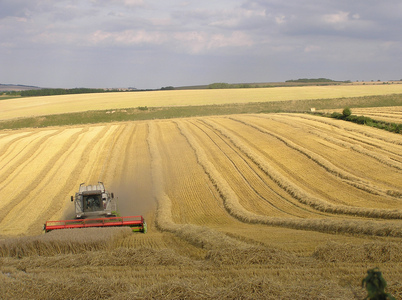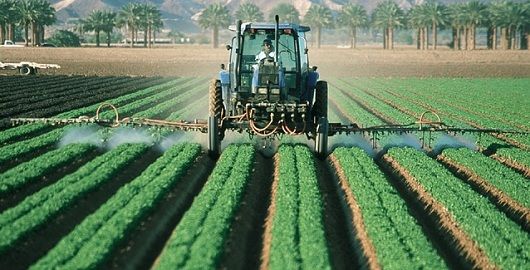Assessing Sustainability: Commercial Farming vs Subsistence Farming Approaches
Assessing Sustainability: Commercial Farming vs Subsistence Farming Approaches
Blog Article
Exploring the Distinctions In Between Commercial Farming and Subsistence Farming Practices
The duality between commercial and subsistence farming methods is marked by varying objectives, functional ranges, and resource use, each with profound implications for both the environment and society. Commercial farming, driven by earnings and efficiency, often utilizes innovative modern technologies that can cause considerable environmental concerns, such as dirt deterioration. Conversely, subsistence farming highlights self-sufficiency, leveraging traditional approaches to sustain home demands while nurturing neighborhood bonds and cultural heritage. These contrasting techniques increase intriguing questions regarding the balance in between economic growth and sustainability. Just how do these different methods shape our world, and what future instructions might they take?
Economic Purposes
Economic purposes in farming methods often dictate the methods and scale of operations. In industrial farming, the main financial objective is to take full advantage of earnings.
In contrast, subsistence farming is mostly oriented towards satisfying the prompt requirements of the farmer's family, with excess production being very little - commercial farming vs subsistence farming. While business farming is profit-driven, subsistence farming is focused around sustainability and durability, reflecting an essentially various set of economic imperatives.

Range of Procedures
The distinction in between industrial and subsistence farming ends up being specifically apparent when considering the scale of operations. Business farming is identified by its massive nature, typically including extensive tracts of land and utilizing sophisticated machinery. These procedures are normally incorporated right into international supply chains, producing vast amounts of crops or animals meant offer for sale in residential and international markets. The range of business farming enables economic situations of scale, causing lowered prices each with mass production, increased performance, and the capability to invest in technical improvements.
In raw comparison, subsistence farming is usually small, concentrating on producing simply sufficient food to satisfy the immediate needs of the farmer's family or local neighborhood. The land location entailed in subsistence farming is frequently minimal, with much less accessibility to contemporary technology or mechanization.
Resource Use
Resource use in farming practices reveals significant distinctions in between business and subsistence methods. Industrial farming, characterized by massive procedures, frequently employs sophisticated technologies and automation to maximize the usage of resources such as land, water, and plant foods. These practices enable improved effectiveness and higher performance. The focus gets on maximizing results by leveraging economies of range and releasing resources purposefully to make sure regular supply and success. Precision farming is increasingly embraced in industrial farming, using data analytics and satellite innovation to check plant health and maximize resource application, further enhancing yield and source performance.
In comparison, subsistence farming runs on a much smaller scale, mostly to fulfill the instant needs of the farmer's family. commercial farming vs subsistence farming. Source usage in subsistence farming is usually restricted by monetary restraints and a dependence on standard techniques. Farmers commonly make use of manual labor and natural resources available locally, such as rain and organic garden compost, to grow their crops. The emphasis is on sustainability and self-direction instead of maximizing outcome. As a result, subsistence farmers may deal with difficulties in resource administration, consisting of limited accessibility to enhanced seeds, plant foods, and watering, which can limit their ability to improve performance and productivity.
Environmental Influence

Conversely, subsistence farming, exercised on a smaller sized scale, typically uses standard strategies that are extra attuned to the surrounding environment. Crop rotation, intercropping, and organic fertilizing are common, promoting soil wellness and lowering the demand for artificial inputs. While subsistence farming generally has a lower environmental impact, it is not without difficulties. Over-cultivation and bad land monitoring can cause dirt erosion and deforestation sometimes.
Social and Cultural Implications
Farming techniques are deeply linked with the social and social fabric of neighborhoods, affecting and mirroring their values, traditions, and economic structures. In subsistence farming, the focus gets on growing enough food to meet the prompt demands of the farmer's family members, often cultivating a strong sense of neighborhood and shared responsibility. Such practices are deeply rooted in regional customs, with understanding gave via generations, therefore protecting cultural heritage and enhancing public ties.
Conversely, industrial farming is mostly driven by link market demands and profitability, often causing a change in the direction of monocultures and large-scale procedures. This technique can cause the erosion of conventional farming practices and cultural identities, as neighborhood customizeds and understanding are supplanted by standard, commercial techniques. The focus on efficiency and profit can occasionally lessen the social communication discovered in subsistence communities, as financial transactions replace community-based exchanges.
The duality in between these farming techniques highlights the more comprehensive social implications of agricultural options. While subsistence farming supports cultural connection and area interdependence, business farming aligns with globalization and financial development, usually at the price of typical social home structures and social variety. commercial farming vs subsistence farming. Balancing these aspects remains a critical challenge for sustainable agricultural growth
Conclusion
The evaluation of industrial and subsistence farming practices reveals significant differences in purposes, range, resource use, ecological impact, and social implications. Conversely, subsistence farming stresses self-sufficiency, using regional sources and conventional approaches, therefore promoting social preservation and community communication.
The duality between commercial and subsistence farming methods is noted by differing goals, operational ranges, and resource use, each with extensive ramifications for both the setting and society. While commercial farming is profit-driven, subsistence farming is centered around sustainability and strength, showing a fundamentally different collection of economic imperatives.
The distinction in between industrial and subsistence farming ends up being particularly apparent when considering the range of operations. While subsistence farming sustains cultural connection and area connection, industrial farming straightens with globalization and financial growth, frequently at the price of typical social structures and cultural diversity.The check it out examination of commercial and subsistence farming practices discloses significant distinctions in objectives, range, resource usage, environmental impact, and social ramifications.
Report this page